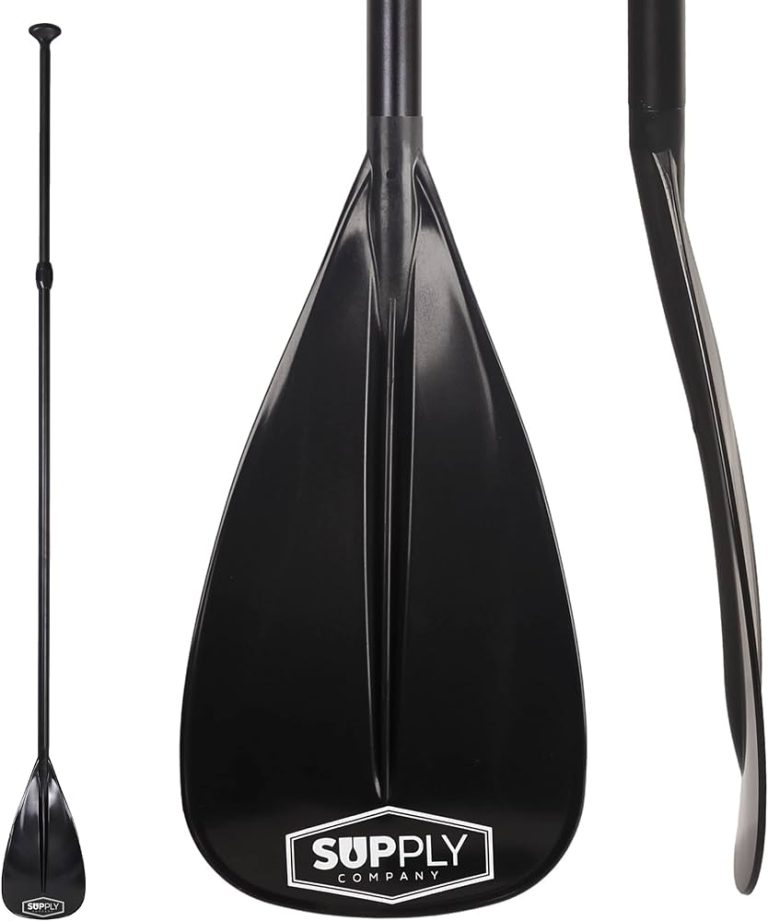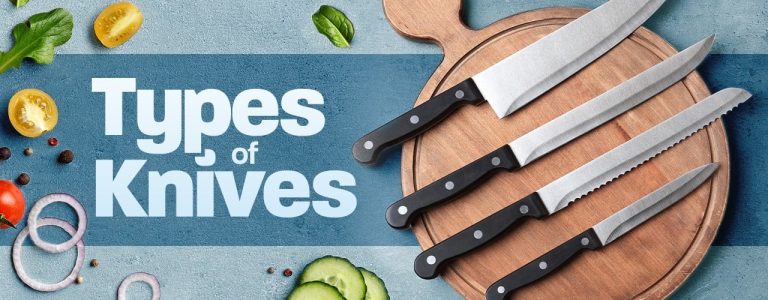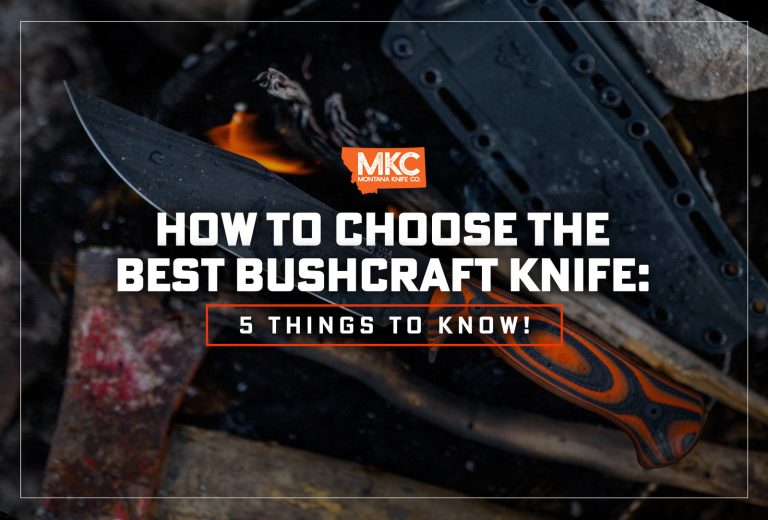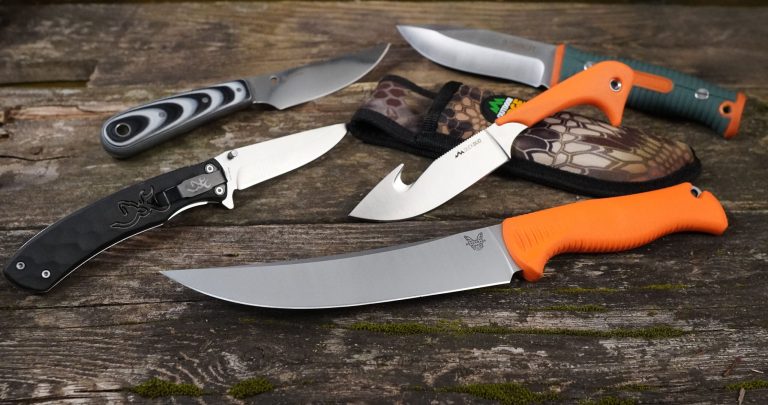Safety Tips for Using Fishing Knives on the Dock
Safety tips for using fishing knives on the dock include always wearing a protective glove and using a knife with a built-in safety mechanism to prevent accidents. When using a fishing knife, it’s essential to stay focused on the task at hand to avoid injuries.
Additionally, proper knife maintenance, such as keeping it sharp and clean, is crucial for safe use. Storing the knife securely when not in use can also help prevent accidents. By following these safety measures, you can ensure a safe and enjoyable fishing experience on the dock.
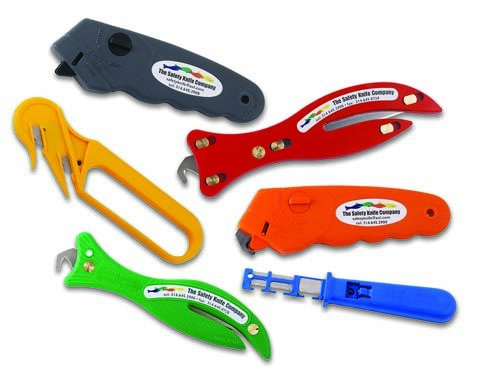
Credit: www.safetyandhealthmagazine.com
Importance Of Proper Knife Handling
Proper knife handling is crucial for safety while using fishing knives on the dock. Follow these tips to minimize the risk of accidents and ensure a safe fishing experience.
How Proper Knife Handling On The Dock Can Prevent Accidents
Proper knife handling on the dock is crucial for ensuring the safety of yourself and those around you. By following the correct procedures, you can significantly reduce the risk of accidents. Here are a few key points to keep in mind:
- Always hold the knife with a firm grip: Maintaining a secure and steady grip on the knife while using it prevents the knife from slipping and potentially causing injury.
- Use a cutting board or stable surface: When cutting or preparing fish on the dock, make sure to use a stable surface that won’t wobble or move. This helps to prevent accidental slips or mishandling of the knife.
- Keep the blade away from your body: One of the most important aspects of proper knife handling is to always keep the blade pointing away from your body. This minimizes the chances of accidentally cutting yourself or others nearby.
- Avoid distractions: Concentration is key when handling a knife on the dock. Avoid distractions such as talking with others or looking away while using the knife. This helps maintain focus and reduces the likelihood of accidents.
The Significance Of Using A Sharp Knife
Using a sharp knife may seem like common sense, but its importance cannot be emphasized enough. Here’s why it’s crucial to work with a sharp knife:
- Clean and precise cuts: A sharp knife allows you to make clean, precise cuts, reducing the chances of slips and accidental injuries.
- Less force required: When a knife is blunt, you often need to apply more pressure to cut through materials. This increases the risk of slips because the extra force can easily cause the knife to veer off course. A sharp knife reduces the need for excessive force.
- Maintains control: A dull knife can easily slip when cutting, causing unexpected movements and potential accidents. A sharp knife allows for better control and stability, reducing the likelihood of mishaps.
Ensuring The Knife Is Securely Attached To Your Person Or Equipment
To keep the knife readily accessible and prevent it from falling into the water or causing harm, it’s essential to securely attach it to your person or equipment. Consider the following precautions:
- Knife sheath or holster: Using a knife sheath or holster provides a secure and safe way to carry your knife. This ensures that the blade is covered and prevents accidental cuts.
- Lanyard or retractable clip: Attaching a lanyard or retractable clip to the handle of your knife can help keep it within reach. This prevents the knife from being dropped or misplaced, minimizing the risk of it causing injury to yourself or others.
- Regularly check attachments: It is important to regularly inspect the attachments holding the knife in place to ensure they are secure and in good condition. Loose or damaged attachments can lead to the knife becoming loose or dislodged, posing a potential danger.
By following proper knife handling techniques, recognizing the significance of using a sharp knife, and ensuring the knife is securely attached, you can create a safe and secure environment while using fishing knives on the dock. Remember, safety should always be the priority when handling any sharp tool.
Essential Safety Equipment For Knife Handling
Ensure your safety while using fishing knives on the dock by using essential safety equipment like cut-resistant gloves, protective eyewear, and a knife sheath. Safeguard yourself from potential accidents and injuries with these crucial tools.
Choosing The Right Knife For The Job
- Consider the type of fishing you’ll be doing and choose a knife accordingly. Different knives are designed for various tasks, such as filleting, scaling, or gutting fish.
- Opt for a knife with a non-slip handle to ensure a secure grip, even when wet. This will help prevent accidental slips or injuries.
- Look for a knife with a sharp and sturdy blade made of stainless steel or a corrosion-resistant material. A dull blade can be dangerous as it requires more force to cut through, increasing the risk of accidents.
- Choose a knife with a sheath or blade cover to protect the blade when not in use. This will help prevent accidental cuts and keep the knife in good condition.
Protective Gear To Consider When Handling Knives On The Dock
- Always wear cut-resistant gloves to protect your hands from cuts or lacerations. These gloves provide an extra layer of protection and grip while handling the knife.
- Consider wearing safety goggles to shield your eyes from any flying debris or accidental knife slips. Safety goggles will prevent eye injuries and ensure your vision remains unobstructed.
- Use a cut-resistant apron to protect your torso and upper body from accidental cuts. This is especially important when filleting or processing larger fish.
- Consider wearing non-slip shoes or boots with good traction to avoid slipping on wet surfaces. Stability and grip are crucial when working on the dock, especially with sharp tools like knives.
Ensuring A Safe Work Area With Proper Lighting And Stability
- Proper lighting is essential when using knives on the dock. Ensure the work area is well-lit to clearly see what you’re doing and avoid accidental slips or cuts. Consider using portable task lights if needed.
- Maintain a stable work surface to maximize control and minimize the risk of accidents. Use a sturdy table or cutting board and secure it properly to prevent movement or wobbling during knife handling.
- Clear any clutter or obstructions around the work area to create a safe zone. This will reduce the chances of accidental injuries caused by tripping or knocking objects onto the dock.
- Keep the workspace dry and free from slippery substances to avoid slips or falls. Wipe away any water or fish slime regularly and use anti-slip mats if necessary.
Remember, choosing the right knife, using adequate protective gear, and ensuring a safe work area are all critical for safe knife handling on the dock. By following these tips, you can enjoy a successful and injury-free fishing experience. Happy fishing!
Proper Knife Maintenance And Storage
Proper knife maintenance and storage is crucial for safety when using fishing knives on the dock. By following these guidelines, you can ensure that your knives are always in good condition and ready for use, reducing the risk of accidents and injuries.
How To Clean And Maintain Your Fishing Knife:
- Rinse the fishing knife with clean water immediately after use to remove any dirt, saltwater, or debris.
- Use a mild dish soap and a soft sponge or cloth to gently clean the blade to avoid scratching the surface.
- Dry the knife completely using a clean towel to prevent corrosion or rust from developing.
- Apply a thin layer of food-grade mineral oil or a rust-preventative oil to the blade to protect it from moisture and oxidation.
- Sharpen the knife regularly using a whetstone or sharpening tool to maintain its cutting edge.
- Avoid using harsh chemicals or abrasive cleaning tools that can damage the blade’s finish or integrity.
Storing The Knife Safely To Prevent Accidents:
- Store the fishing knife in a secure sheath or knife holster to prevent accidental cuts or injuries.
- Keep the sheathed knife in a designated storage area away from children or others who may come into contact with it.
- Store the knife in a dry and well-ventilated spot to avoid moisture buildup, which can lead to rust or corrosion.
- Avoid storing the knife with other sharp objects or tools that could potentially cause damage or dull the blade.
- Consider using a magnetic strip or knife rack to keep the knife easily accessible while also ensuring safe storage.
Regularly Inspecting The Knife For Any Signs Of Damage Or Wear:
- Check the blade for any nicks, cracks, or chips that may compromise its integrity or safety.
- Look for any loosened handle materials or signs of wear and tear that may affect the grip.
- Ensure that the blade is securely attached to the handle without any wobbling or movement.
- If any damage is found, refrain from using the knife until it has been repaired or replaced.
- Regularly sharpen the blade to maintain its cutting performance and minimize the risk of accidents.
Techniques For Safe Knife Usage On The Dock
Learn essential safety tips for using fishing knives on the dock to prevent accidents and injuries. Ensure proper grip, maintain a clean workspace, use a cutting board, keep knives out of reach of children, and always handle knives with caution.
Stay safe while enjoying your time by the water!
Using a fishing knife on the dock requires caution and proper technique to ensure safety and prevent injuries. Whether you are cutting bait, filleting fish, or preparing seafood, it is essential to follow specific guidelines to protect yourself and others.
In this section, we will explore various techniques for safe knife usage on the dock, including the proper grip and posture, safe cutting techniques, and handling different types of fish and seafood.
Proper Grip And Posture When Using A Fishing Knife:
- Hold the knife firmly but not too tightly to maintain control and reduce the risk of slippage.
- Position your fingers in a claw-like grip, keeping them away from the blade to avoid accidental cuts.
- Maintain a balanced stance with your feet shoulder-width apart and your body weight evenly distributed.
- Align your body and knife with the cutting surface to ensure stability and prevent strain on your muscles.
Safe Cutting Techniques To Prevent Injuries:
- Place the fish or seafood on a stable and clean surface, such as a cutting board or a fillet table.
- Keep the knife blade sharp to minimize the need for excessive force during cutting.
- Use controlled and deliberate motions while cutting, avoiding sudden, jerky movements.
- When filleting a fish, start from the tail end and work towards the head, applying even pressure to achieve clean cuts.
- Take your time and avoid rushing to reduce the likelihood of accidents.
Handling Different Types Of Fish And Seafood With A Knife:
- For small fish, such as panfish or trout, use a smaller knife with a thin, flexible blade for precise cuts.
- Larger fish, like salmon or tuna, require a sturdier knife with a wider blade to handle their size and toughness.
- When dealing with shellfish, such as crabs or lobsters, use a specialized shellfish knife to safely crack and extract the meat.
- Be cautious when cutting around bones or hard shells to prevent accidental slips that may result in puncture wounds or cuts.
Remember, practicing these safe knife usage techniques on the dock will help ensure a pleasant and injury-free fishing experience. By maintaining proper grip and posture, using safe cutting techniques, and handling different types of fish and seafood with care, you can enjoy your time on the dock while keeping yourself and others safe.
Emergency Preparedness And First Aid Procedures
Discover essential safety tips for using fishing knives on the dock to prevent accidents and injuries. Learn how to handle and store your knife properly, maintain a secure grip, and always exercise caution to ensure a safe fishing experience.
Fishing knives are incredibly useful tools for anglers on the dock, but like any sharp object, accidents and injuries can happen. It’s important to be prepared for any emergencies that may occur while using a fishing knife. In this section, we will discuss emergency preparedness and first aid procedures to ensure your safety on the dock.
What To Do In Case Of Accidents Or Injuries While Using A Fishing Knife On The Dock:
- Assess the situation: Quickly evaluate the severity of the injury and determine if immediate medical attention is needed.
- Stop the bleeding: Apply direct pressure to the wound using a clean cloth or your hand. Elevate the injured area if possible to reduce bleeding.
- Clean the wound: Rinse the wound with clean water to remove any dirt or debris, minimizing the risk of infection.
- Dress the wound: Apply a sterile dressing or bandage to cover the wound and protect it from further contamination.
- Seek medical help if necessary: If the injury is severe, deep, or you are unable to control the bleeding, seek medical assistance immediately.
Essential First-Aid Tips For Common Knife-Related Injuries:
- Cuts and lacerations: Clean the wound thoroughly, apply direct pressure to control bleeding, and dress the wound with a sterile bandage.
- Puncture wounds: Rinse the wound with clean water, apply pressure to stop bleeding, but avoid removing any foreign objects that may be stuck in the wound.
- Avulsion injuries: If a body part is partially or completely detached, clean it with clean water, apply a clean cloth or sterile dressing, and seek medical help immediately.
- Severed arteries or tendons: Apply direct pressure to the wound to minimize bleeding, immobilize the injured area, and seek immediate medical attention.
Remember, these first-aid tips are intended as general advice. It’s important to consult professional medical help for proper assessment and treatment of any injuries sustained from using a fishing knife.
Emergency Contact Information And Procedures To Follow In Case Of Severe Incidents:
In case of severe incidents, it’s crucial to have access to emergency contact information and know the correct procedures to follow:
- Call emergency services: Dial the emergency hotline number in your country (e.g., 911 in the United States) to report the incident and seek immediate assistance.
- Provide location details: Clearly state your location, such as the dock name or coordinates, to help emergency services locate you quickly.
- Follow instructions: Listen carefully to the emergency operator’s instructions and follow them accordingly.
- Stay with the injured person: If it is safe to do so, remain with the injured person until help arrives to provide comfort and assistance.
By being prepared and knowledgeable about emergency procedures and first-aid techniques, you can ensure a safer fishing experience on the dock. Remember, always prioritize safety and take necessary precautions when using fishing knives or any other tools on the dock.
Frequently Asked Questions On Safety Tips For Using Fishing Knives On The Dock
What Are The Safety Precautions When Using Knives?
Safety precautions when using knives include: 1. Keep your knives sharp to avoid slipping or excessive force. 2. Always grip the handle firmly and never carry a knife by the blade. 3. Use a cutting board and maintain a stable working area to prevent accidents.
4. Store knives in a safe place, away from children or anyone untrained in knife handling.
What Are 8 Rules For Knife Safety?
Sure! Here is an exact, accurate, and short answer for the FAQ:To ensure knife safety, follow these 8 rules:1. Always keep knives sharp and clean. 2. Use a cutting board on a stable surface. 3. Use the correct knife for each task.
4. Hold the knife securely with a firm grip. 5. Cut away from your body and keep fingers away from the blade. 6. Store knives in a safe and organized manner. 7. Never catch falling knives or pass them hand-to-hand.
8. Keep knives out of reach of children.
What Is The Most Important Safety Equipment When Fishing From A Boat?
The most important safety equipment for fishing from a boat is a life jacket.
What Is The Best Bait For Fishing Off A Dock?
The best bait for fishing off a dock is typically live bait, such as worms or minnows.
Conclusion
Using fishing knives on the dock can be a fun and rewarding experience, but it is crucial to prioritize safety to avoid accidents or injuries. By following a few simple tips, you can ensure a safe and enjoyable fishing trip.
Firstly, always handle fishing knives with care, keeping them sharp and clean to avoid slips and mishaps. Secondly, practice proper knife safety techniques, such as holding the knife with a secure grip and cutting away from your body. Additionally, be aware of your surroundings and avoid distractions when using the knife, as it only takes a split second for an accident to occur.
Furthermore, consider wearing protective gear such as gloves or goggles to minimize the risk of injuries. Lastly, always store fishing knives properly when not in use, keeping them out of reach of children and securing them to avoid any accidents.
By following these safety tips, you can enhance your fishing experience and ensure that it remains enjoyable for years to come.

